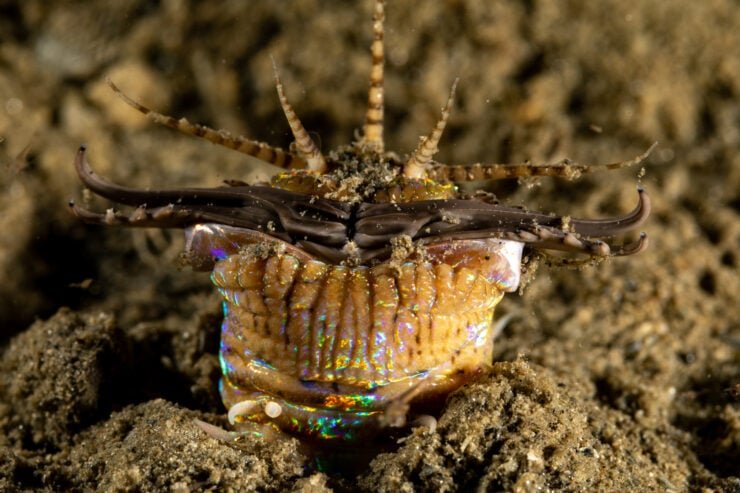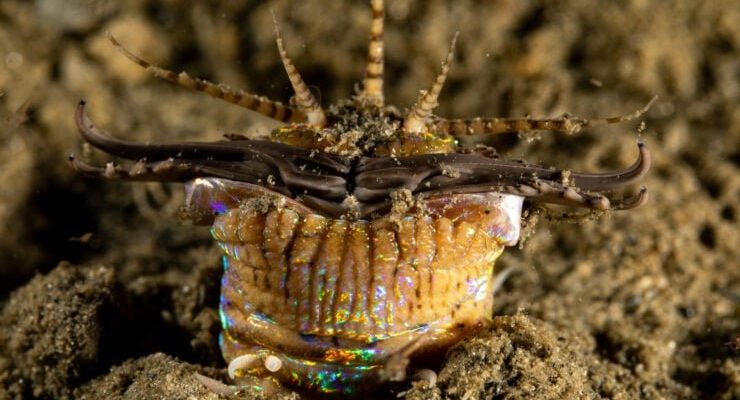
To give you a sense of what we’re dealing with, imagine a lioness sprinting toward its prey, but instead of being on land, it’s happening beneath the waves. The Bobbit worm uses its lightning-fast reflexes to capture unsuspecting fish and other creatures that come too close. So, how fast can they really strike? Let’s dive deep into the world of Bobbit worms and explore their astonishing hunting techniques.
Understanding the Anatomy of a Bobbit Worm
Before we get to their striking speed, it’s essential to understand what makes a Bobbit worm unique. These worms can grow up to 10 feet long, though most are around 3 feet. They have a segmented body with a distinct head featuring several tentacle-like appendages. These appendages help them sense movements in the water, making it easier to catch prey.
What’s fascinating is their **jaws**. Bobbit worms don’t have ordinary mouths; instead, they boast razor-sharp, scissor-like jaws that snap shut at incredible speeds. Imagine trying to catch a fly with your fingers—now think of how much quicker that would be with a pair of scissors. It’s this unique anatomy that allows Bobbit worms to strike at such breathtaking speeds.
In terms of **color**, Bobbit worms are often bright and vibrant, adorned with beautiful shades of green, purple, and blue. Their colors not only make them pleasing to the eye but also help them camouflage with the ocean floor among corals and rocks. This helps them ambush their prey without being detected.
Bobbit Worms: The Speed Demons of the Ocean
Now, let’s tackle the big question: how fast can Bobbit worms strike? When a prey item gets close enough, these worms can launch themselves out of their burrows and snap their jaws shut in as little as **0.5 seconds**. That’s faster than you can blink!
You might be wondering how this compares to other underwater predators. Well, if you think of a typical anglerfish slowly luring in its prey, the Bobbit worm is the opposite. It’s the sprinter in a race where everyone else is taking their time. This remarkable speed is crucial for survival, as it allows them to quickly overwhelm and capture fish before they can escape.
The speed of a Bobbit worm is fascinating, but it also raises questions about how they manage to strike so quickly. Their **nervous system** plays a significant role in this, allowing them to react instantaneously to movements in the water. When they feel vibrations from nearby fish or other creatures, it’s like a trigger that sends them into action.
The Hunting Techniques of Bobbit Worms
Apart from speed, Bobbit worms employ various techniques while hunting. They often bury themselves in the sand, leaving only their colorful antennae exposed. This clever tactic helps them blend into their surroundings while waiting for a meal to swim by. When the time is right, they burst out, striking at lightning speed.
Their hunting strategy is essentially a game of patience. They can remain hidden for long periods, which makes them appear even more formidable. Think about it: it’s like a sniper waiting for the perfect moment to take a shot, adding an element of suspense to their predatory behavior.
Once they capture their prey, Bobbit worms use their jaws to grip and immobilize it. Here’s the thing: their jaw isn’t just strong; it’s finely tuned to tear flesh. This means they can take down creatures much larger than themselves, making them one of the ocean’s more effective hunters.
Why Bobbit Worms Matter in the Ecosystem
Though they can seem a little scary, Bobbit worms play an essential role in their ecosystems. As predators, they help control fish populations, keeping the balance in their habitats. Without such predators, certain species could overpopulate, leading to disrupted food chains and ecological imbalance.
While they primarily feast on fish, they also consume other marine organisms. This means they contribute to the overall health of the marine environment by promoting biodiversity and ensuring that various species thrive alongside one another.
Bobbit worms are also food for bigger predators, like fish and sea turtles. They serve as both hunters and prey, illustrating the complexity of aquatic life. Think of them as a vital cog in the larger machinery of the ocean, helping to maintain order and balance.
Common Misconceptions About Bobbit Worms
One common misconception is that Bobbit worms are dangerous to humans. While they do possess a powerful bite, they are not known to attack people. The real danger comes from their amazing speed and agility when striking prey. They’re just doing what they do best—hunting and surviving in the underwater world.
Another misunderstanding is that all worms are slow and harmless. Bobbit worms defy this stereotype with their quick reflexes and predatory behavior. You might think of them as the tigers of the sea—graceful yet lethal.
Some people even believe that Bobbit worms are invasive species, which is somewhat misleading. They are native to warm, tropical waters and serve their purpose within that ecosystem. Proper education about these creatures is essential to understand their role and importance in marine life.
How to Observe Bobbit Worms Safely
If you’re curious about seeing Bobbit worms in action, you’ll want to do so safely. Many aquariums showcase these unique creatures, so visiting one is a perfect way to observe their behavior without diving into the ocean yourself.
If you’re a snorkeler or diver, remember to maintain a safe distance. Watching them strike in their natural habitat can be mesmerizing, but don’t disturb them. They’re not like your typical household pet; they can react quickly if they feel threatened.
Another option is to watch videos or documentaries that feature Bobbit worms. Many marine biologists share fascinating footage of these creatures, capturing their remarkable speed and hunting techniques. It’s an excellent way to appreciate their incredible adaptations without getting wet!
In Conclusion
Bobbit worms are a remarkable example of nature’s brilliance. Their ability to strike at breathtaking speeds, combined with their unique anatomy and tactics, makes them fascinating creatures worth learning about. They remind us that even in the depths of the ocean, where life can seem slow and calm, there are incredible stories of survival and speed waiting to be discovered.
So next time you think about these underwater predators, remember: it’s not just about how fast they can strike, but also about the important role they play in our planet’s ecosystems. Whether you’re a curious learner or a budding marine biologist, understanding these creatures adds depth to our appreciation of ocean life.

